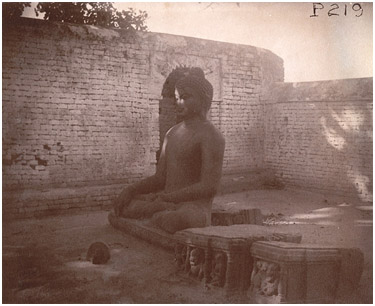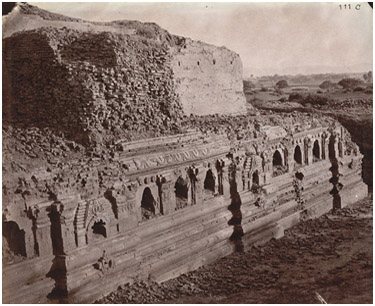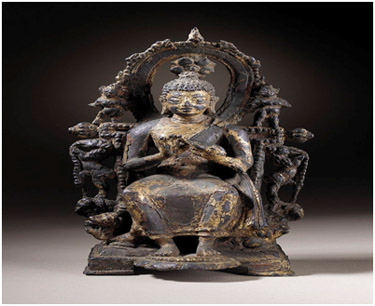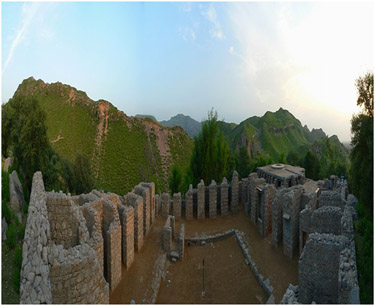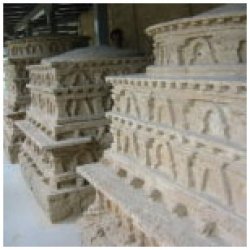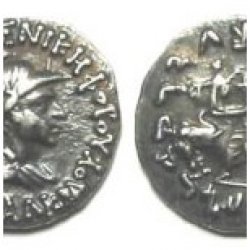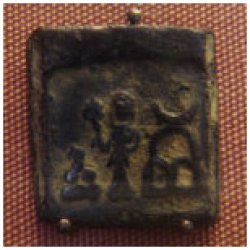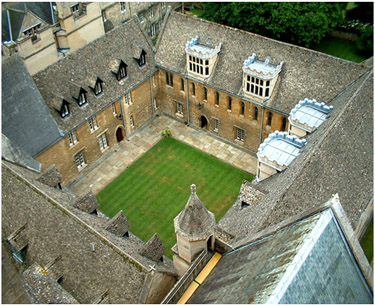UNIVERSITY
DEFINITION
A university (Latin: universitas, “a whole”) is an institution of higher (or tertiary) education and research which grantsacademic degrees in various subjects and typically provides undergraduate education and postgraduate education. The word “university” is derived from the Latin universitas magistrorum et scholarium, which roughly means “community of teachers and scholars.”
The original Latin word “universitas” refers in general to “a number of persons associated into one body, a society, company, community, guild, corporation, etc.”[2] At the time of the emergence of urban town life and medieval guilds, specialised “associations of students and teachers with collective legal rights usually guaranteed by charters issued by princes, prelates, or the towns in which they were located” came to be denominated by this general term. Like other guilds, they were self-regulating and determined the qualifications of their members.[3]
In modern usage the word has come to mean “An institution of higher education offering tuition in mainly non-vocational subjects and typically having the power to confer degrees,”[4] with the earlier emphasis on its corporate organization considered as applying historically to Medieval universities.[5]
The original Latin word referred to degree-granting institutions of learning in Western and Central Europe, where this form of legal organisation was prevalent, and from where the institution spread around the world.
UNIVERSITY SET-UP
The private universities of India are established by different State Acts and adhere to the provisions mentioned in the UGC Act, 1956 and also follow the amendments to the same.
The laws state that a private university should be a singular entity that has sufficient teaching, examination, and research facilities in addition to extension services. A private university created as per a State Act operates generally within the territorial boundaries of the state where it is inaugurated.
OPENING SUBSIDIARY UNITS
A university will be permitted to start off-campus centres, study centres, and off-shore campuses after a period of 5 years. Such permission is provided in special circumstances and requires the fulfilment of the following conditions:
- The study centres and off-campus centres can be established with previous consent from the UGC and the ruling government of the state where the facility will be based
- An off shore campus can only be opened after procuring the necessary permission from the Union Government of India and the government of the country where the centre will be based
- Either the UGC or an agency selected by it will monitor the total performance of the centres. The centres will be required to follow the management, improvement and academic development related guidelines provided by the UGC
- The remittance of funds of the off shore campuses will be done as per the relevant guidelines and laws mentioned by the Reserve Bank of India
- If the UGC finds the performance of the said centres to be less than satisfactory the concerned universities will have to stop operating them. However in these circumstances, the well-being of the already enrolled will be properly attended to
GUIDELINES FOR OPENING A NEW UNIVERSITY
The private universities of India need to satisfy the minimum guidelines for several areas such as:
- Programs
- Infrastructure
- Faculty
- Financial feasibility
Following are the statutory organizations, aside from the University Grants Commission (UGC) whose guidelines have to be followed by the new universities in India:
- All India Council for Technical Education (AICTE)
- Indian Nursing Council (INC)
- Bar Council of India (BCI)
- Medical Council of India (MCI)
- Distance Education Council (DEC)
- National Council for Teacher Education (NCTE)
- Dental Council of India (DCI
- Pharmacy Control of India (PCI)
With regards to fees and process of admission, the university in question will be required to follow the norms laid down by the UGC and other relevant statutory bodies.
UNIVERSITY CURRICULUM COMPOSITION
The degree and diploma programs of a new university at the undergraduate and postgraduate level need to have the formal consent of the following constituent bodies of the same:
- Board of Studies
- Governing/Executive Council
- Academic Council
The university will be required to adhere to the norms related to curriculum laid down by the UGC or any other relevant statutory body. It will also need to follow all the modifications that are done to the existing norms in this regard. The private organization will have to provide detailed information regarding the following areas of its various programs to the UGC before initiating them:
- Curriculum structure
- System of evaluation and examination
- Content
- Eligibility criteria for admitting students
- Process of teaching and learning
The UGC will conduct a thorough analysis of the information thus provided and also look into the feedback and complaints from the students regarding the curriculum. It will also seek additional opinion on whether the proposed programs have followed the UGC norms and all the possible problematic areas.
The UGC will then inform the concerned university about the shortcomings – the university will consequently need to address these areas and then offer the modified versions of the concerned programs.
INSPECTION OF UNIVERSITIES IN INDIA
The UGC conducts inspection of the university at definite intervals. This is also applicable for the off campus centres, offshore campuses, and studycentres of the same.
The UGC will also collect important information in this regard from the university in question. This is done as per the UGC (Returns of Information by Universities) Rules, 1979 – the amendments to the same will also have to be followed as and when applicable.
PROBLEMS WITH OPENING UNIVERSITY IN INDIA
The major factor for opening a university in India is to present a new dimension to technology, science, and other emerging disciplines. Infrastructural requirements are another major issue in this regard.
The Indian government normally provides special incentives for inaugurating universities in remote areas. In recent times several deemed universities have been de-affiliated for being unable to satisfy the required guidelines regarding faculty and infrastructure.
NALANDA UNIVERSITY
Nalanda was an acclaimed Mahavihara, a large Buddhist monastery in the ancient kingdom of Magadha (modern-day Bihar) in India. The site is located about 95 kilometres southeast of Patna near the town of Bihar Sharif, and was a centre of learning from the fifth century CE to c.1200 CE.
The highly formalized methods of Vedic learning helped inspire the establishment of large teaching institutions such as Taxila, Nalanda, and Vikramashila which are often characterised as India’s early universities. Nalanda flourished under the patronage of the Gupta Empire in the 5th and 6th centuries and later under Harsha, the emperor of Kannauj. The liberal cultural traditions inherited from the Gupta age resulted in a period of growth and prosperity until the ninth century. The subsequent centuries were a time of gradual decline, a period during which the tantric developments of Buddhism became most pronounced in eastern India under the Pala Empire.
At its peak, the school attracted scholars and students from near and far with some travelling all the way from Tibet, China,Korea, and Central Asia. Archaeological evidence also notes contact with the Shailendra dynasty of Indonesia, one of whose kings built a monastery in the complex.
Much of our knowledge of Nalanda comes from the writings of pilgrim monks from East Asia such as Xuanzang and Yijing who travelled to the Mahavihara in the 7th century. Vincent Smith remarked that “a detailed history of Nalanda would be a history of Mahayanist Buddhism”. Many of the names listed by Xuanzang in his travelogue as products of Nalanda are the names of those who developed the philosophy of Mahayana. All students at Nalanda studied Mahayana as well as the texts of the eighteen (Hinayana) sects of Buddhism. Their curriculum also included other subjects such as the Vedas, logic, Sanskrit grammar, medicine and Samkhya.
Nalanda was very likely ransacked and destroyed by an army of the Muslim Mamluk Dynasty under Bakhtiyar Khilji in c. 1200 CE.While some sources note that the Mahavihara continued to function in a makeshift fashion for a while longer, it was eventually abandoned and forgotten until the 19th century when the site was surveyed and preliminary excavations were conducted by the Archaeological Survey of India. Systematic excavations commenced in 1915 which unearthed eleven monasteries and six brick temples neatly arranged on grounds 12 hectares in area. A trove of sculptures, coins, seals, and inscriptions have also been discovered in the ruins many of which are on display in the Nalanda Archaeological Museum situated nearby. Nalanda is now a notable tourist destination and a part of the Buddhist tourism circuit.
TAKSASILA UNIVERSITY
Taxila is a town and an important archaeological site in Rawalpindi District of Punjab, Pakistan, situated about 32 km (20 mi) north-west of Islamabad andRawalpindi, just off the famous Grand Trunk Road. The town lies 549 metres (1,801 ft) above sea level. It is the headquarters of the Taxila Tehsil in Rawalpindi district.
Ancient Taxila was situated at the pivotal junction of South Asia and Central Asia. Some of the earliest ruins in this area date to the time of the Achaemenid Empire in the 6th century BCE.
Owing to its strategic location, Taxila has changed hands many times over the centuries, with many empires vying for its control. When the great ancient trade routes connecting these regions ceased to be important, the city sank into insignificance and was finally destroyed by the nomadic Hunas in the 5th century. The renowned archaeologist Sir Alexander Cunninghamrediscovered the ruins of Taxila in the mid-19th century. In 1980, Taxila was declared a UNESCO World Heritage Site. In 2006 it was ranked as the top tourist destination in Pakistan by The Guardian newspaper.
By some accounts, Taxila was considered to be amongst the earliest universities in the world. Others do not consider it a university in the modern sense, in that the teachers living there may not have had official membership of particular colleges, and there did not seem to have existed purpose-built lecture halls and residential quarters in Taxila, in contrast to the later Nalanda university in eastern India.
In a 2010 report, Global Heritage Fund identified Taxila as one of 12 worldwide sites most “On the Verge” of irreparable loss and damage, citing insufficient management, development pressure, looting, and war and conflict as primary threats.
Hindu mythology has it that Taxila derived its name from Takṣa, who was the son of Bharata, the brother of the Hindu deity Rama. Takṣa’s kingdom was called Takṣa Khanda and its capital that he founded was named Taxila.According to another theory propounded by Damodar Dharmananda Kosambi, Taxila is related to Takṣaka, Sanskrit for “carpenter”, and is an alternative name for the Nāga, a non-Indo-Iranian people of ancient India.In the great Hindu epic, the Mahābhārata, the Kuru Kingdom’s heir, Parikṣit (grandson of the Arjuna) was enthroned at Taxila. Traditionally, it is believed that the Mahabharata was first recited at Taxila by Vaisampayana, student of Vyasa at the behest of the seer Vyasa himself, at the Snake Sacrifice.
Scattered references in historical works indicated that Taxila may have dated back to at least the 8th century BCE. Historically, Taxila lay at the crossroads of three major ancient trade routes. Owing to this strategic location, Taxila has changed hands many times over the centuries.
Archaeological excavations later showed that the city may have grown significantly during the Achaemenid Empire] of the 6th century BCE. In 516 BC, Darius I embarked on a campaign to Central Asia, Ariana and Bactria and then marched into Afghanistan to Hindush in modern Pakistan. Darius spent the winter of 516-515 BCE in Gandhara, preparing to conquer the Indus Valley. Darius conquered the Indus in 515 BCE. He controlled the Indus Valley from Gandhara to modern Karachi and appointed the Greek Scylax of Caryanda to explore the Indian Ocean from the mouth of the Indus to the Suez. Darius then marched through the Bolan Pass and returned through Arachosia and Drangiana back to Persia.
Taxila is also described in some detail in the Buddhist Jataka tales, which date from about the 4th century BCE. The Jataka literature mentions it as the capital of the kingdom of Gandhara and as a great centre of learning.
Greek invaders arrived during the 4th century BCE. According to Joseph Needham: “When the men of Alexander the Great came to Taxila … they found a university there the like of which had not been seen in Greece, a university which taught the three Vedas and the eighteen accomplishments and was still existing when the Chinese pilgrim Fa-Hsienwent there about AD 400.”
ANCIENT CENTRE OF LEARNING
Taxila became a noted centre of learning (including the religious teachings of Hinduism) at least several centuries BCE, and continued to attract students from around the old world until the destruction of the city in the 5th century. At its height, it has been suggested that Taxila exerted a sort of “intellectual suzerainty” over other centres of learning in India., and its primary concern was not with elementary, but higher education. Generally, a student entered Taxila at the age of sixteen. The Vedas, the ancient and the most revered Hindu scriptures, and the Eighteen Silpas or Arts, which included skills such as archery, hunting, and elephant lore, were taught, in addition to its law school, medical school, and school of military science. Students came to Taxila from far-off places such as Kashi, Kosala and Magadha, in spite of the long and arduous journey they had to undergo, on account of the excellence of the learned teachers there, all recognized as authorities on their respective subjects.
NOTABLE STUDENTS AND TEACHERS
Taxila had great influence on the Hindu culture and the Sanskrit language. It is perhaps best known because of its association with Chanakya, also known as Kautilya, the strategist who guided Chandragupta Maurya and assisted in the founding of the Mauryan empire. The Arthashastra (Sanskrit for The knowledge of Economics) of Chanakya, is said to have been composed in Taxila itself. The Ayurvedic healer Charaka also studied at Taxila. He also started teaching at Taxila in the later period. The ancient grammarian Pāṇini, who codified the rules that would define Classical Sanskrit, has also been part of the community at Taxila.
The institution is significant in Buddhist tradition since it is believed that the Mahāyāna branch of Buddhism took shape there. Jivaka, the court physician of the Magadha emperor Bimbisara who once cured the Buddha, and the enlightened ruler of Kosala, Prasenajit, are some important personalities mentioned in Pali texts who studied at Taxila.
NATURE OF EDUCATION
By some accounts, Taxilla was considered to be amongst the earliest universities in the world. Others do not consider it a university in the modern sense, in that the teachers living there may not have had official membership of particular colleges, and there did not seem to have existed purpose-built lecture halls and residential quarters in Taxila, in contrast to the later Nalanda University.
No external authorities like kings or local leaders subjected the scholastic activities at Taxila to their control. Each teacher formed his own institution, enjoying complete autonomy in work, teaching as many students as he liked and teaching subjects he liked without conforming to any centralized syllabus. Study terminated when the teacher was satisfied with the student’s level of achievement. In general, specialisation in a subject took around eight years, though this could be lengthened or shortened in accordance with the intellectual abilities and dedication of the student in question. In most cases the “schools” were located within the teachers’ private houses, and at times students were advised to quit their studies if they were unable to fit into the social, intellectual and moral atmosphere there.
Knowledge was considered too sacred to be bartered for money, and hence any stipulation that fees ought to be paid was vigorously condemned. Financial support came from the society at large, as well as from rich merchants and wealthy parents. Though the number of students studying under a single Guru sometimes numbered in the hundreds, teachers did not deny education even if the student was poor; free boarding and lodging was provided, and students had to do manual work in the household. Paying students like princes were taught during the day; non-paying ones, at night. Guru Dakshina was usually expected at the completion of a student’s studies, but it was essentially a mere token of respect and gratitude – many times being nothing more than a turban, a pair of sandals, or an umbrella. In cases of poor students being unable to afford even that, they could approach the king, who would then step in and provide something. Not providing a poor student a means to supply his Guru’s Dakshina was considered the greatest slur on a King’s reputation.
Examinations were treated as superfluous, and not considered part of the requirements to complete one’s studies[citation needed]. The process of teaching was critical and thorough- unless one unit was mastered completely, the student was not allowed to proceed to the next. No convocations were held upon completion, and no written “degrees” were awarded, since it was believed that knowledge was its own reward. Using knowledge for earning a living or for any selfish end was considered sacrilegious.
Students arriving at Taxila usually had completed their primary education at home (until the age of eight), and their secondary education in the Ashrams (between the ages of eight and twelve), and therefore came to Taxila chiefly to reach the ends of knowledge in specific disciplines.
RUINS
The British archaeologist Sir John Marshall (1876-1958) conducted excavations over a period of twenty years in Taxila.
OXFORD UNIVERSITY
The University of Oxford (informally Oxford University or simply Oxford) is a collegiate research university located in Oxford,England, United Kingdom. While having no known date of foundation, there is evidence of teaching as far back as 1096, making it the oldest university in the English-speaking world and the world’s second-oldest surviving university.It grew rapidly from 1167 when Henry II banned English students from attending the University of Paris. After disputes between students and Oxford townsfolk in 1209, some academics fled northeast to Cambridge where they established what became the University of Cambridge.The two “ancient universities” are frequently jointly referred to as “Oxbridge”.
The university is made up of a variety of institutions, including 38 constituent colleges and a full range of academic departments which are organised into four divisions. All the colleges are self-governing institutions as part of the university, each controlling its own membership and with its own internal structure and activities. Being a city university, it does not have a main campus; instead, all the buildings and facilities are scattered throughout the city centre. Most undergraduate teaching at Oxford is organised around weekly tutorials at the self-governing colleges and halls, supported by classes, lectures and laboratory work provided by university faculties and departments.
Oxford is the home of several notable scholarships, including the Clarendon Scholarship which was launched in 2001 and theRhodes Scholarship which has brought graduate students to study at the university for more than a century. The university operates the largest university press in the worldand the largest academic library system in Britain. Oxford has educated many notable alumni, including 27 Nobel laureates, 26 Prime Ministers of the United Kingdom, and many heads of state from around the world.
The University of Oxford has no known foundation date. Teaching at Oxford existed in some form as early as 1096, but it is unclear when a university came into being. It grew quickly in 1167 when English students returned from the University of Paris. The historianGerald of Wales lectured to such scholars in 1188 and the first known foreign scholar, Emo of Friesland, arrived in 1190. The head of the university was named a chancellor from at least 1201 and the masters were recognised as a universitas or corporation in 1231. The university was granted a royal charter in 1248 during the reign of King Henry III.
After disputes between students and Oxford townsfolk in 1209, some academics fled from the violence to Cambridge, later forming theUniversity of Cambridge.
CAMBRIDGE UNIVERSITY
The University of Cambridge (informally Cambridge University or simply Cambridge) is a collegiate public research university in Cambridge, England. Founded in 1209, Cambridge is the second-oldest university in the English-speaking world and the world’s fourth-oldest surviving university. The university grew out of an association of scholars who left the University of Oxfordafter a dispute with the townspeople. The two ancient universities share many common features and are often referred to jointly as “Oxbridge”.
Cambridge is formed from a variety of institutions which include 31 constituent colleges and over 100 academic departments organised into six schools. Cambridge University Press, a department of the university, is the world’s oldest publishing house and the second-largest university press in the world. The university also operates eight cultural and scientific museums, including the Fitzwilliam Museum, and a botanic garden. Cambridge’s libraries hold a total of around 15 million books, eight million of which are in Cambridge University Library, a legal deposit library.
In the year ended 31 July 2015, the university had a total income of £1.64 billion, of which £397 million was from research grants and contracts. The central university and colleges have a combined endowment of around £5.89 billion, the largest of any university outside the United States. The university is closely linked with the development of the high-tech business cluster known as “Silicon Fen”. It is a member of numerous associations and forms part of the “golden triangle” of leading English universities and Cambridge University Health Partners, an academic health science centre.
Cambridge is consistently ranked as one of the world’s best universities.The university has educated many notable alumni, including eminent mathematicians, scientists, politicians, lawyers, philosophers, writers, actors, and foreign Heads of State. Ninety-two Nobel laureates and ten Fields medalists have been affiliated with Cambridge as students, faculty, staff or alumni. Throughout its history, the university has featured in literature and artistic works by numerous authors including Geoffrey Chaucer, E. M. Forsterand C. P. Snow.
HOWARD UNIVERSITY
Howard University (HU or simply Howard) is a federally chartered, private, coeducational, nonsectarian, historically black university(HBCU) in Washington, D.C. It is classified by the Carnegie Foundation as a research university with high research activity and is accredited by the Middle States Commission on Higher Education.
From its outset it has been nonsectarian and open to people of both sexes and all races. In addition to the undergraduate program, Howard has graduate schools in business, engineering, pharmacy, law, social work, education, communications, art, science, divinity, dentistry, and medicine.
Howard is ranked among the nation’s top 150 colleges and second among HBCUs by U.S. News & World Report. Howard is the only HBCU ranked in the top 75 on the 2015 Bloomberg Businessweek college rankings. The Princeton Review ranked the school of business #1 in opportunities for minority students and in the top five for most competitive students. The National Law Journal ranked the law school among the top 25 in the nation. In 2011, the Huffington Post named Howard the second best dressed college in the nation.
Howard is the most comprehensive HBCU in the country and produces the most black doctorate recipients of any university.
Main Hall (right) and Miner Hall in 1868. Shortly after the end of the American Civil War, members of The First Congregational Society of Washington considered establishing a theological seminary for the education of African-American clergymen. Within a few weeks, the project expanded to include a provision for establishing a university. Within two years, the University consisted of the Colleges of Liberal Arts and Medicine. The new institution was named for General Oliver Otis Howard, a Civil War hero, who was both the founder of the University and, at the time, Commissioner of the Freedmen’s Bureau. Howard later served as President of the university from 1869–74.[12]
U.S. Congress chartered Howard on March 2, 1867, and much of its early funding came from endowment, private benefaction, and tuition. An annual congressional appropriation administered by the U.S. Department of Education funds Howard University and Howard University Hospital.[13]
Many improvements were made on campus. Howard Hall was renovated and made a dormitory for women. J. Stanley Durkee, Howard’s last white president, was appointed in 1918.[14]
Howard University has played an important role in American history and the Civil Rights Movement on a number of occasions. Alain Locke, Chair of the Department of Philosophy and first African American Rhodes Scholar, authored The New Negro, which helped to usher in the Harlem Renaissance.[15] Ralph Bunche, the first Nobel Peace Prize winner of African descent, served as chair of the Department of Political Science.[16] Beginning in 1942, Howard University students pioneered the “stool-sitting” technique, which was to play a prominent role in the later civil rights movement. By January, 1943, students had begun to organize regular sit-ins and pickets at cigar stores and cafeterias around Washington, D.C. which refused to serve them because of their race. These protests continued until the administration asked the students to stop in the Fall of 1944.[17] Stokely Carmichael, also known as Kwame Toure, a student in the Department of Philosophy and the Howard University School of Divinity coined the term “Black Power” and worked inLowndes County, Alabama as a voting rights activist.[18] Historian Rayford Logan served as chair of the Department of History.[19] E. Franklin Frazier served as chair of the Department of Sociology.[20] Sterling Allen Brown served as chair of the Department of English.







